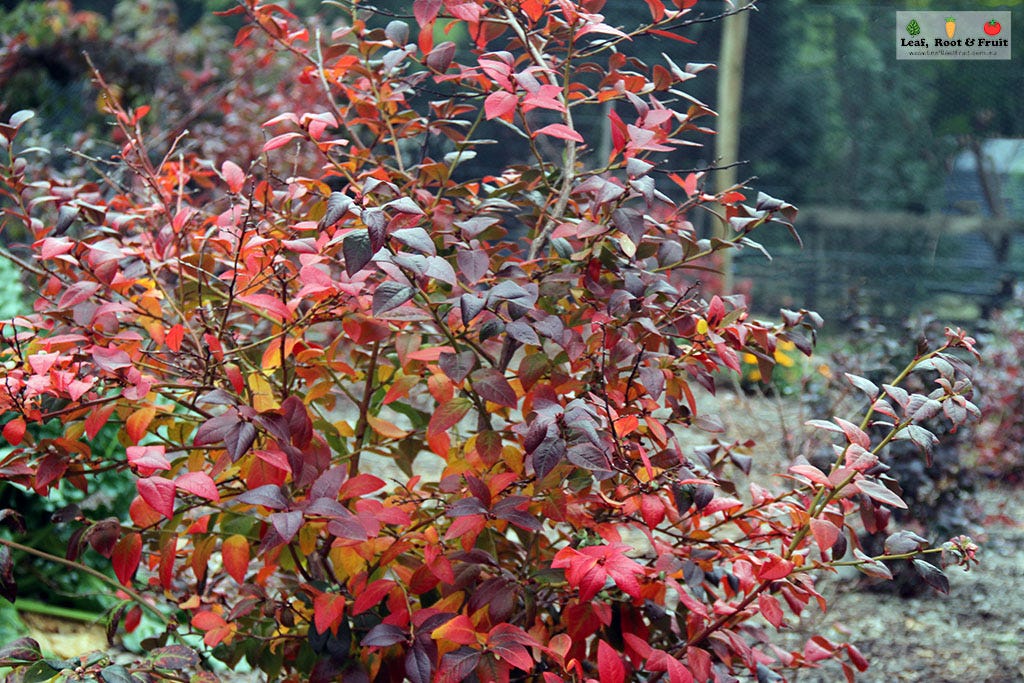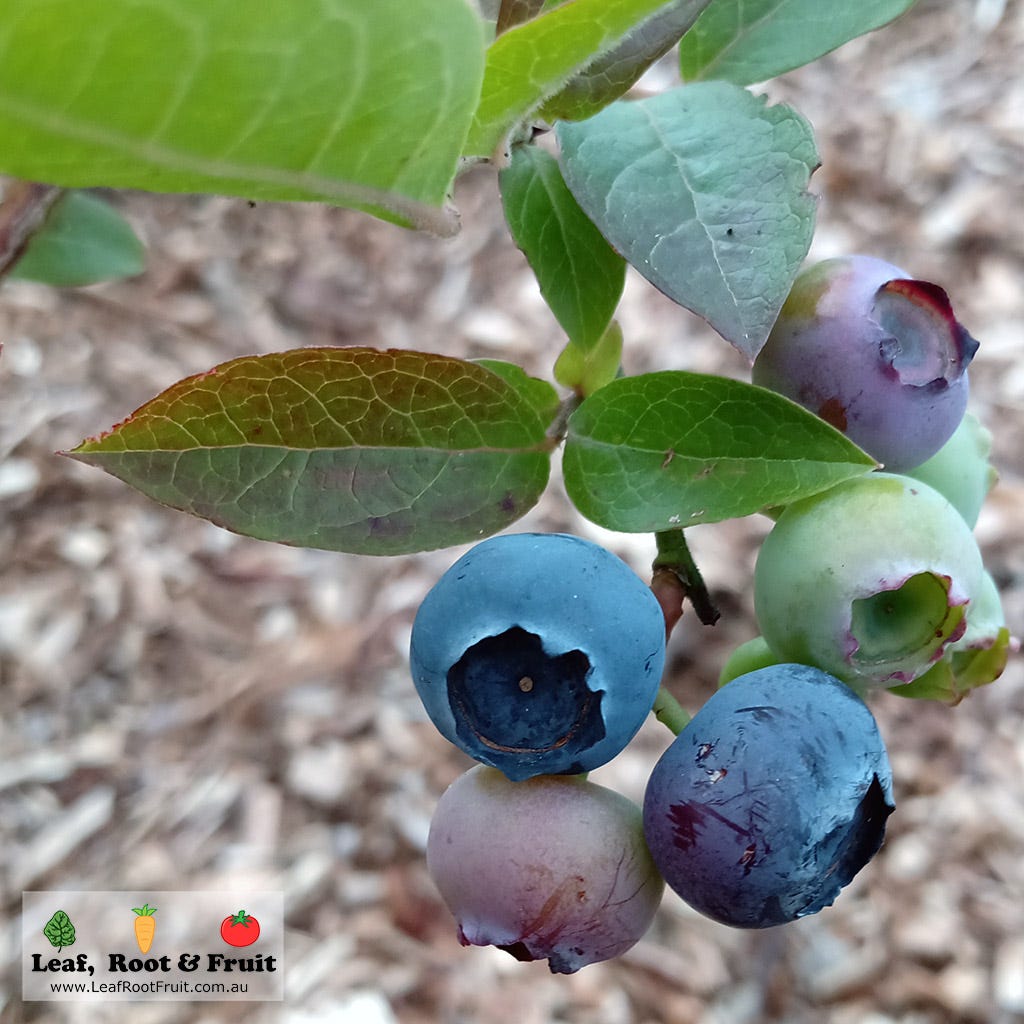How to Grow Blueberries (Vaccinium spp.)
A guide to growing fantastic crops of Blueberries in a temperate climate
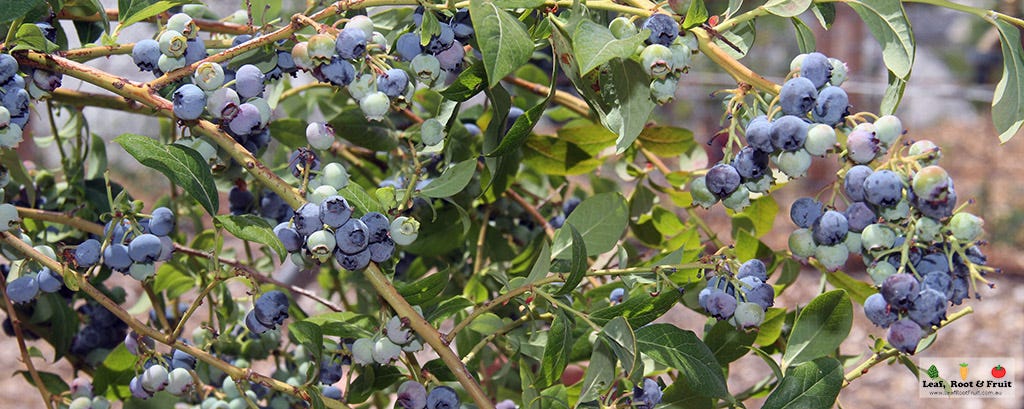
Blueberries are amazing plants for the home gardener to grow. They are small shrubs growing up to two metres tall and 1.5 metres wide. Deciduous blueberry plants can display stunning autumn foliage, so they are a great addition to ornamental gardens as well as those focussing on edibles. However, the main reason to grow blueberries is for the fruit. Blueberries taste great, are packed full of nutrients and can be frozen for use throughout the year. Each plant can produce a large crop of more than a kilo of fruit.
Where to plant Blueberries
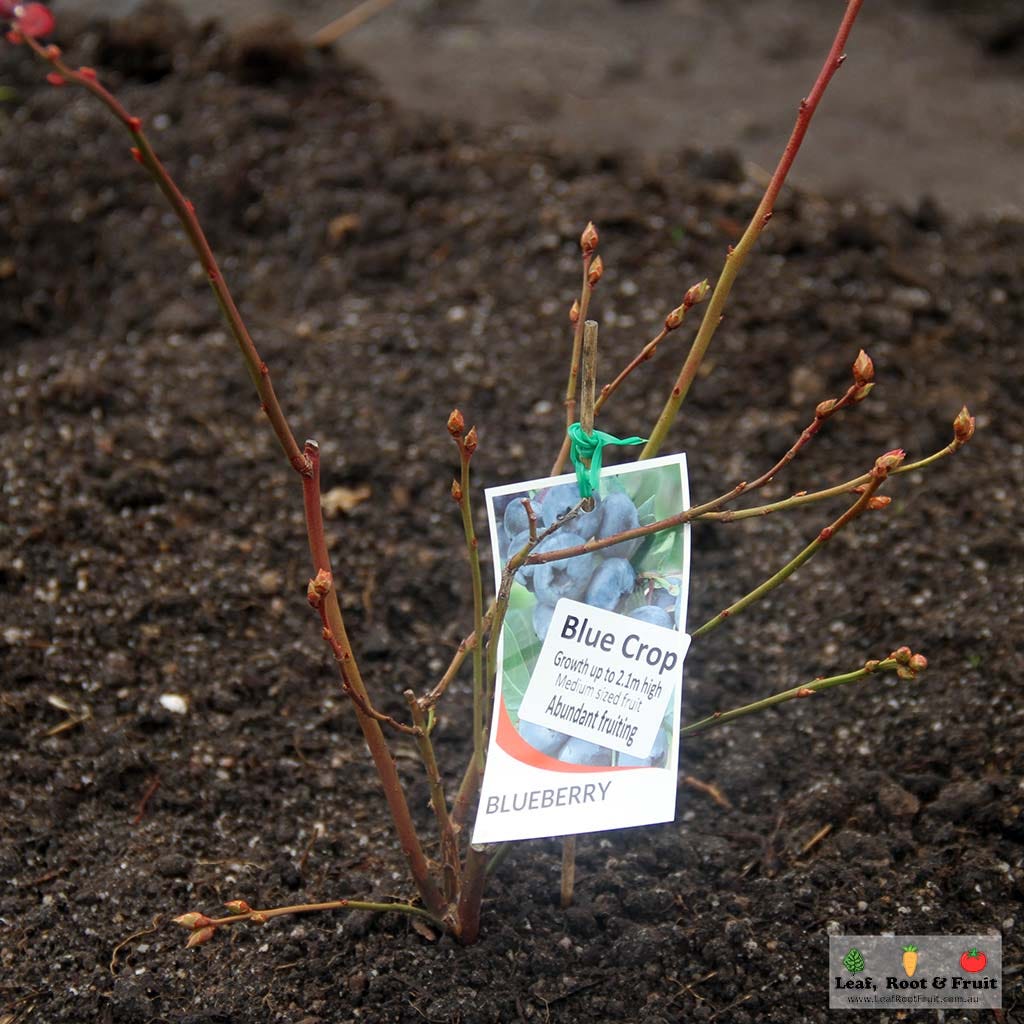
Blueberries have two important requirements that will influence how and where you plant them.
Amazing Drainage: Blueberries hate wet feet. Ironically, they have evolved to grow in peat bogs, but they occupy the high ground within those ecosystems. Blueberries will struggle to grow in clay soil. This means, that much of Melbourne based gardeners will need to plant their blueberries into pots or raised beds. Blueberries need a very sandy soil to ensure adequate drainage. They can also benefit from being planted into mounds. Avoid planting blueberries at the bottom of a slope or anywhere water is likely to pool (even slightly).
Acidic Soil: All plants need the mineral iron to grow. Iron occurs naturally in soil. Most plants have ‘iron chelators’ to enable them to extract the iron that they need from the soil. Blueberries (and other ericaceous plants such a camellias and azaleas) lack the iron chelator enzymes and struggle to extract iron from the soil. The availability of iron in the soil is influenced by the soil pH. Iron is ‘locked up’ in neutral and alkaline soils. However, the more acidic the soil, the more iron becomes available to plants and the more able Ericaceous plants are to thrive with adequate iron. Acidic soil is not essential to growing blueberries, but it will make life easier to grow them. Neutral soils will either need to be acidified with sulphur or have adequate iron made available to the blueberry plants.
Our soil here in Kyneton is granitic sand. The sandy soil is very free draining and has a low pH of 5.5. This is perfect blueberry country! We have 21 blueberry plants growing along two long raised mounds. The two rows are 2 metres apart (trunk to trunk) and the plants within the rows are 1.5 metres apart. In our set up, drip irrigation has been installed under a heavy layer of wood chip mulch.
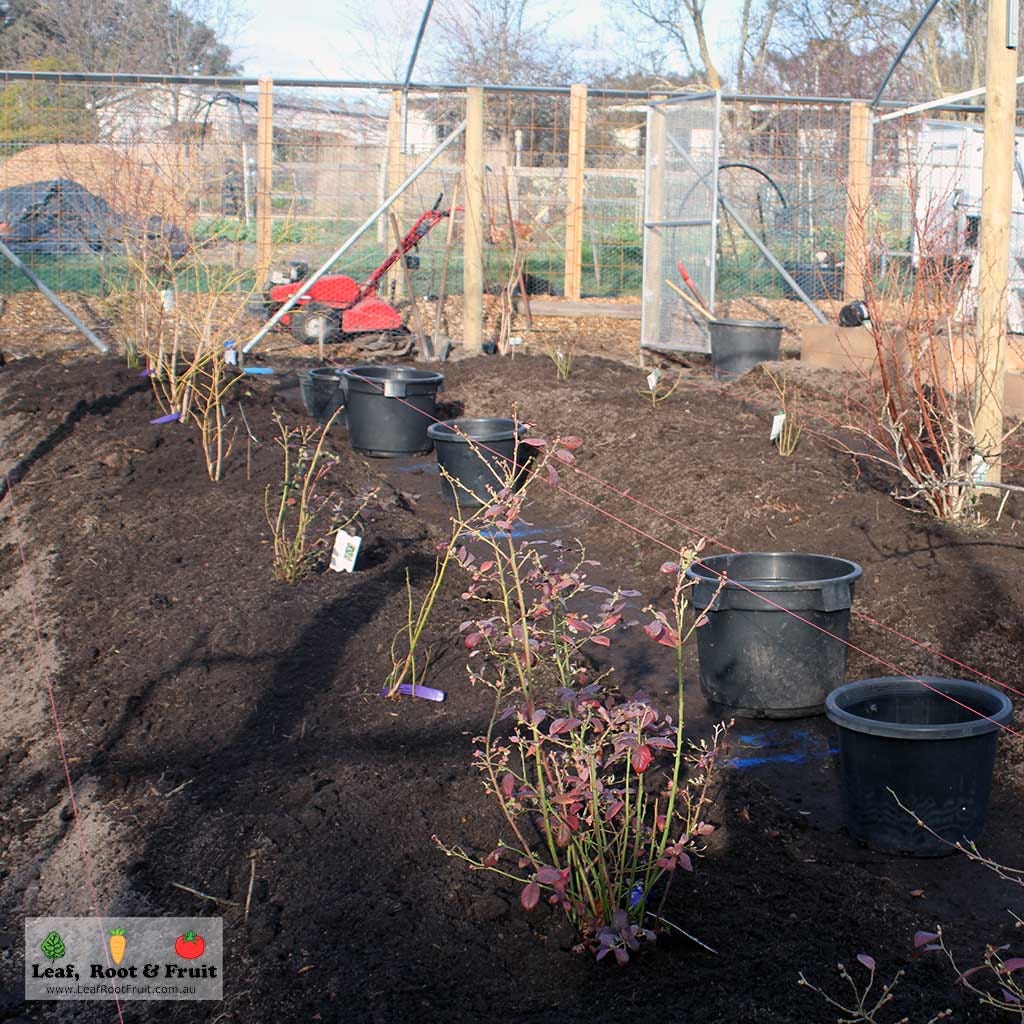
If your soil is too heavy for growing blueberries in the ground then they are very productive in pots. In fact, my number one tip for renters is to focus on growing berries such as blueberries in pots. For those of you growing blueberries in pots, you’ll need to use an acidic potting mix that drains freely (we’ve found that Nature’s Soil is fantastic for Blueberries). Avoid using heavy potting mixes or garden soils in the pot, as the plants will struggle with this. Small plants can be started in say a 30cm pot, but the plants will need to be potted up every second year. Go up by around 10cm pot diameter each time.
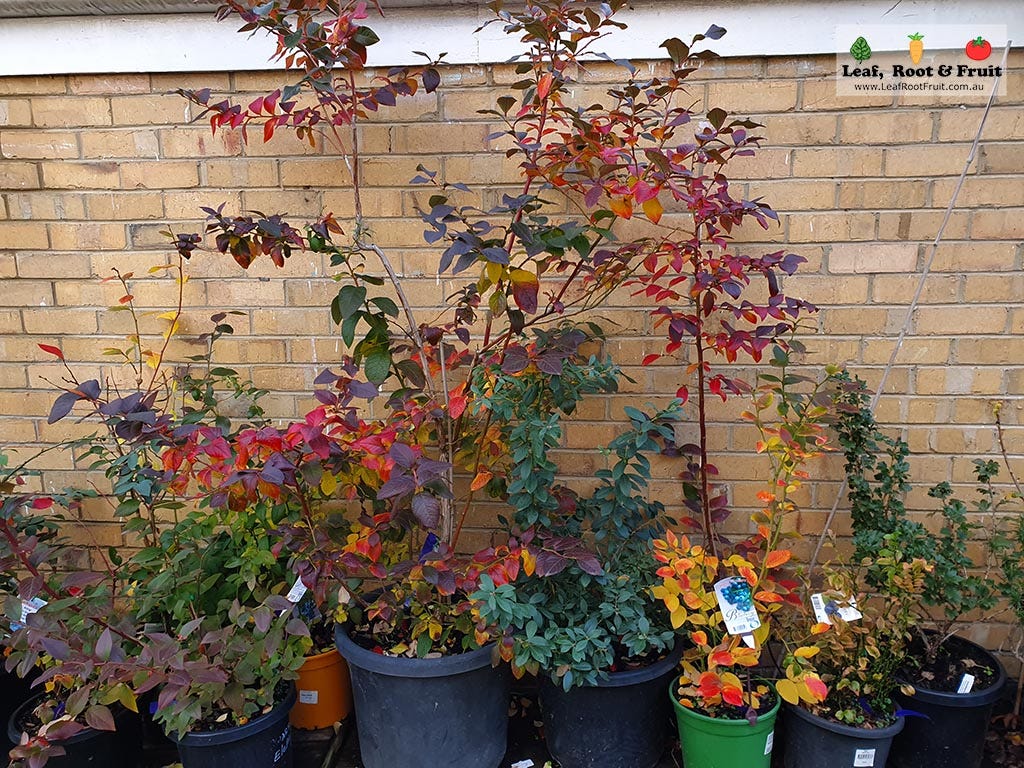
As they like good drainage, you should never place a saucer under the potted blueberry.
Pollination
Blueberries need pollen from a different blueberry variety to pollinate their flowers and set fruit. So you will need to grow more than one variety.
Ongoing Care and Maintenance
Blueberries are conflicted plants! They need access to continuous moisture, but need amazing drainage. Keep soil moisture levels well topped up, especially in summer when the plants are fruiting. Failure to keep soil moisture topped up, will see the fruit quickly shrivel on the plant and the whole crop being wasted.
Blueberries crop on new growth and are hungry feeders. Ensure you regularly apply plenty of rotted manure (chicken manure is great), compost or a general purpose fertiliser to keep them thriving.
Blueberry Pruning
I don’t prune my blueberries much (especially if they are small). Apparently, if plants become too neglected, they will tend to produce small berries. However, I haven’t experienced this.
Blueberries produce on newer, young growth. Pruning should aim to encourage plenty of vigorous new growth. As the plant becomes established consider removing entire canes from the base. Aim to remove the older, more spindly canes and retain as much strong new growth as possible.
Blueberry Types
There are three different types of blueberries
Northern Highbush Blueberries (Vaccinium corymbosum)
These are the most commonly grown blueberries. They require a high number of chill hours so are only suited to growing in temperate climates. Northern Highbush Blueberries are deciduous plants, usually growing as large as two metres tall. They are tolerant of frost and usually have fantastic autumn foliage.
Southern Highbush Blueberries (Vaccinium corymbosum hybrid)
These blueberries are ‘low chill’ and can be grown in the warmer states of Australia. They are not commonly grown in Victoria.
Rabbit Eye Blueberries (Vaccinium ashei)
The name ‘Rabbit Eye’ comes from the fruit resembling the eye of a rabbit. These plants are usually evergreen (or partially deciduous). The plants are low chill, meaning they can be grown in warm climates, but will also grow well in Victoria. I find these are often crop later into the season, although the fruit can sometimes be a bit gritty, so variety selection is very important. Many of the Rabbit Eye varieties have a low, spreading habit.
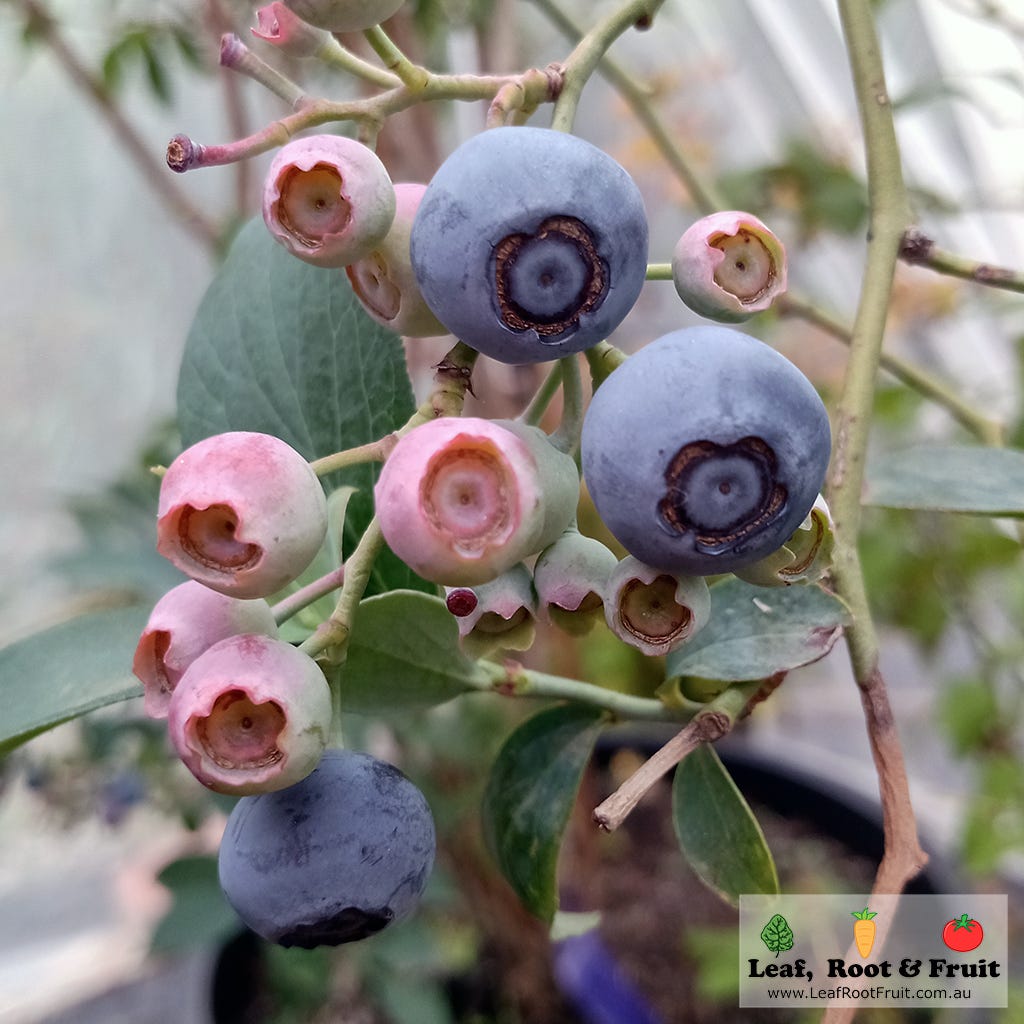
My Recommended Varieties and How to Propagate Them (It’s quite tricky!)
Choosing the correct varieties to grow is essential to growing abundant crops. Some varieties are more resilient, productive and most importantly are tastier than other varieties. If you are going to go to the effort of growing blueberries then makes sure you get the biggest and tastiest fruit possible. Listed below are a few of my favourites and a section at the end on how to propagate them




